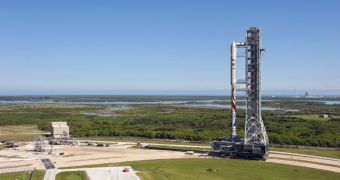Yesterday Utah-based aerospace company Alliant Techsystems (ATK) announced plans to develop a new space launch system for ferrying astronauts to low-Earth orbit. The system will include both a spacecraft and a rocket. The latter will be based on the Liberty delivery system ATK is now building.
Details of how this system will be set up were presented at the first Spacecraft Technology Expo, a meeting that gathered officials and representatives from all important aerospace companies. The private spaceflight industry is really beginning to take off, so to speak, hence the exhibit.
According to the ATK announcement, the first spacecraft the company develops could launch into space as early as 2015, which is just three years away. This is a very short time frame for developing an orbital vehicle, Space reports.
Last year, the company participated in the NASA Commercial Crew Development (CCDev) program, but failed to secure space agency funding for its Liberty delivery system. Nevertheless, ATK continued to develop the rocket under an unfunded Space Act Agreement with NASA.
The SSA contract implies that the federal government will not sponsor the private company in any way. However, the American space agency will share some of its designing and testing expertise with engineers at the corporation.
The vice president and program manager for Liberty, Kent Rominger, said at the Expo that the entire launch system the company proposed would be centered around this rocket. ATK opted for the development of a manned capsule for delivering astronauts to the International Space Station (ISS).
“The goal is to provide a new launch capability for the nation. The vehicle is designed to be very, very simple, and inherently more safe and reliable. We really believe the whole system is designed for success,” the official explained.
One version of the spacecraft will be able to carry seven astronauts to targets in LEO, while others will carry different numbers of astronauts and cargo sizes. In the long term, the company also wants to become able to provide launch services for US government satellites.
“We are looking at space tourism. Also other [space] stations, such as Bigelow – we can help build the station. We're also looking at other nations that aren't partners on the space station that would like to have stand-alone missions,” Rominger concluded.

 14 DAY TRIAL //
14 DAY TRIAL //